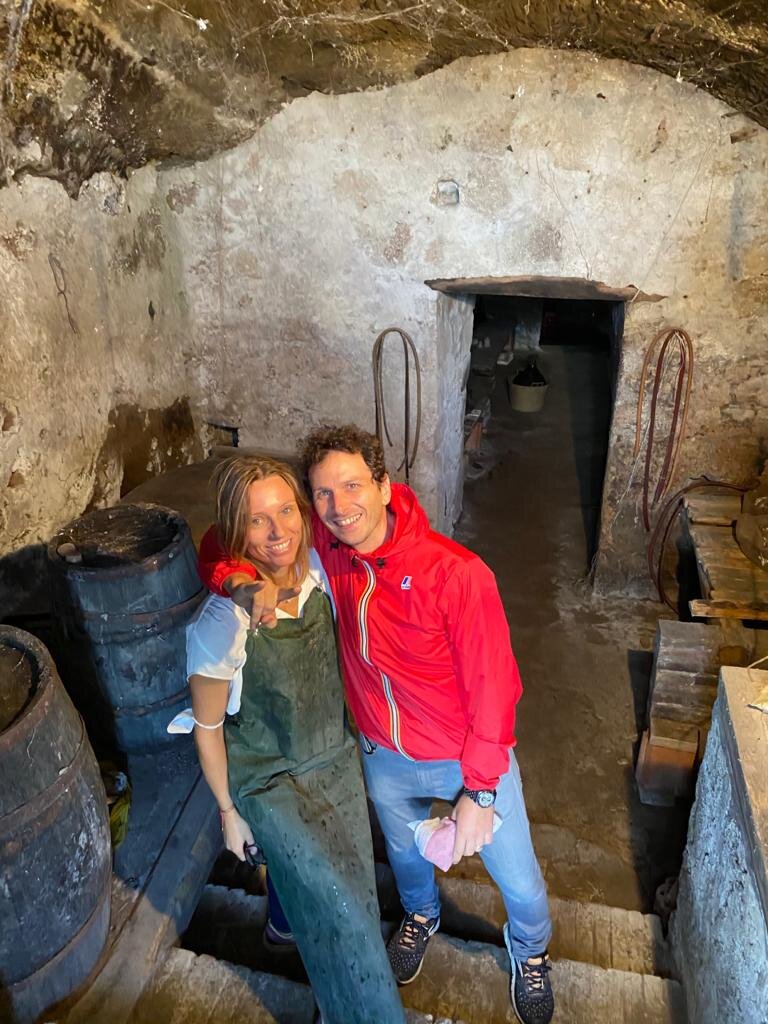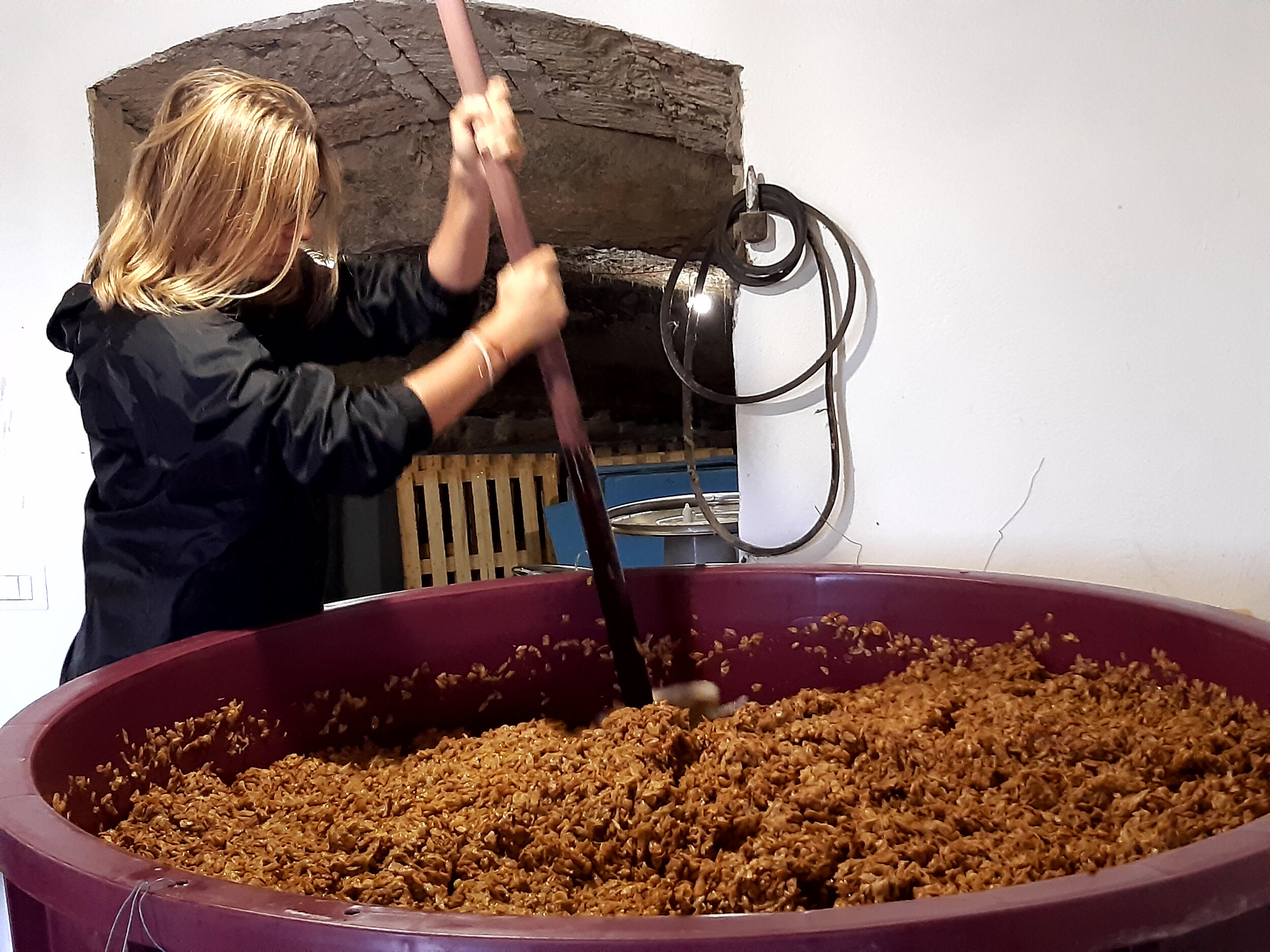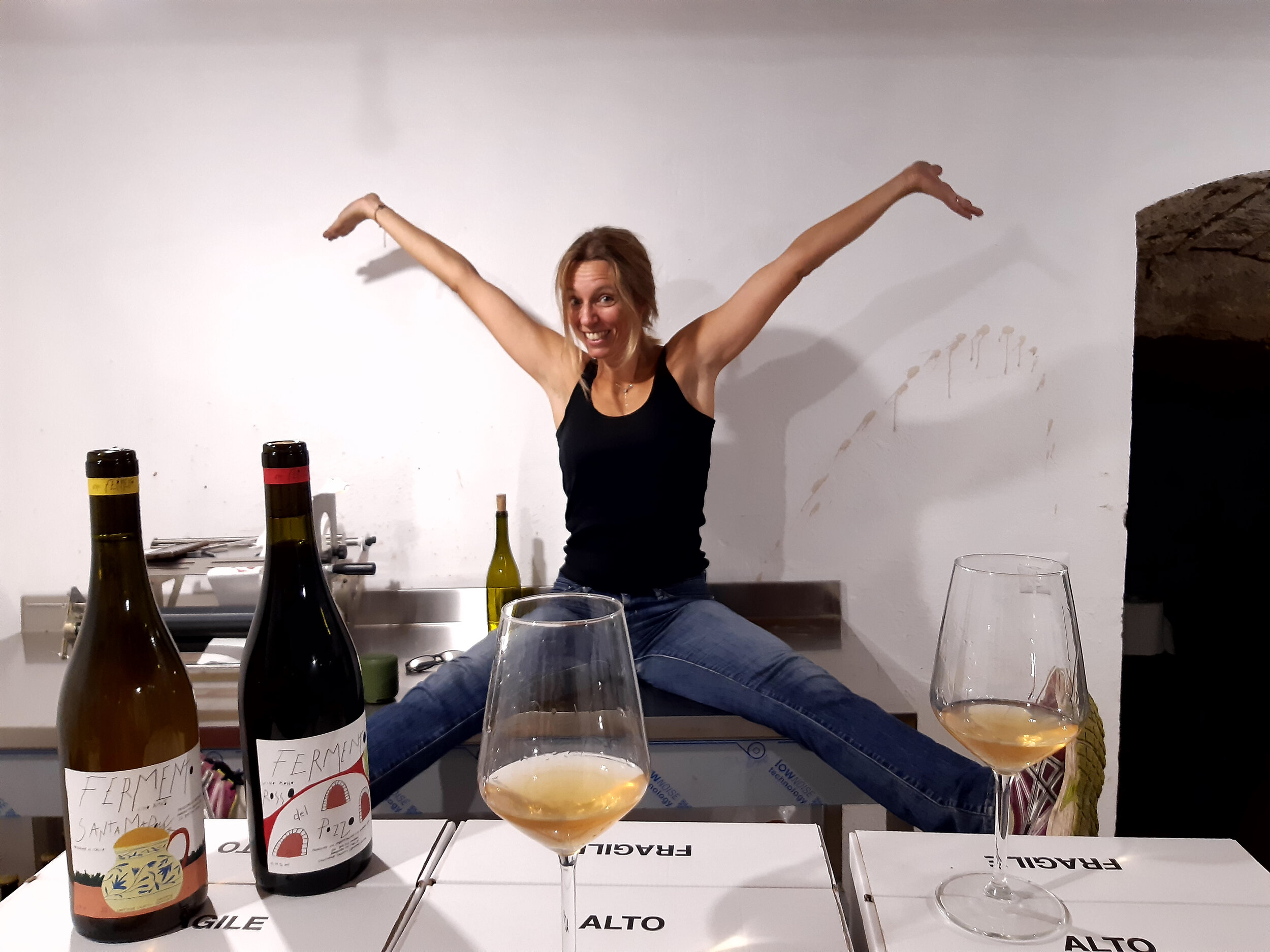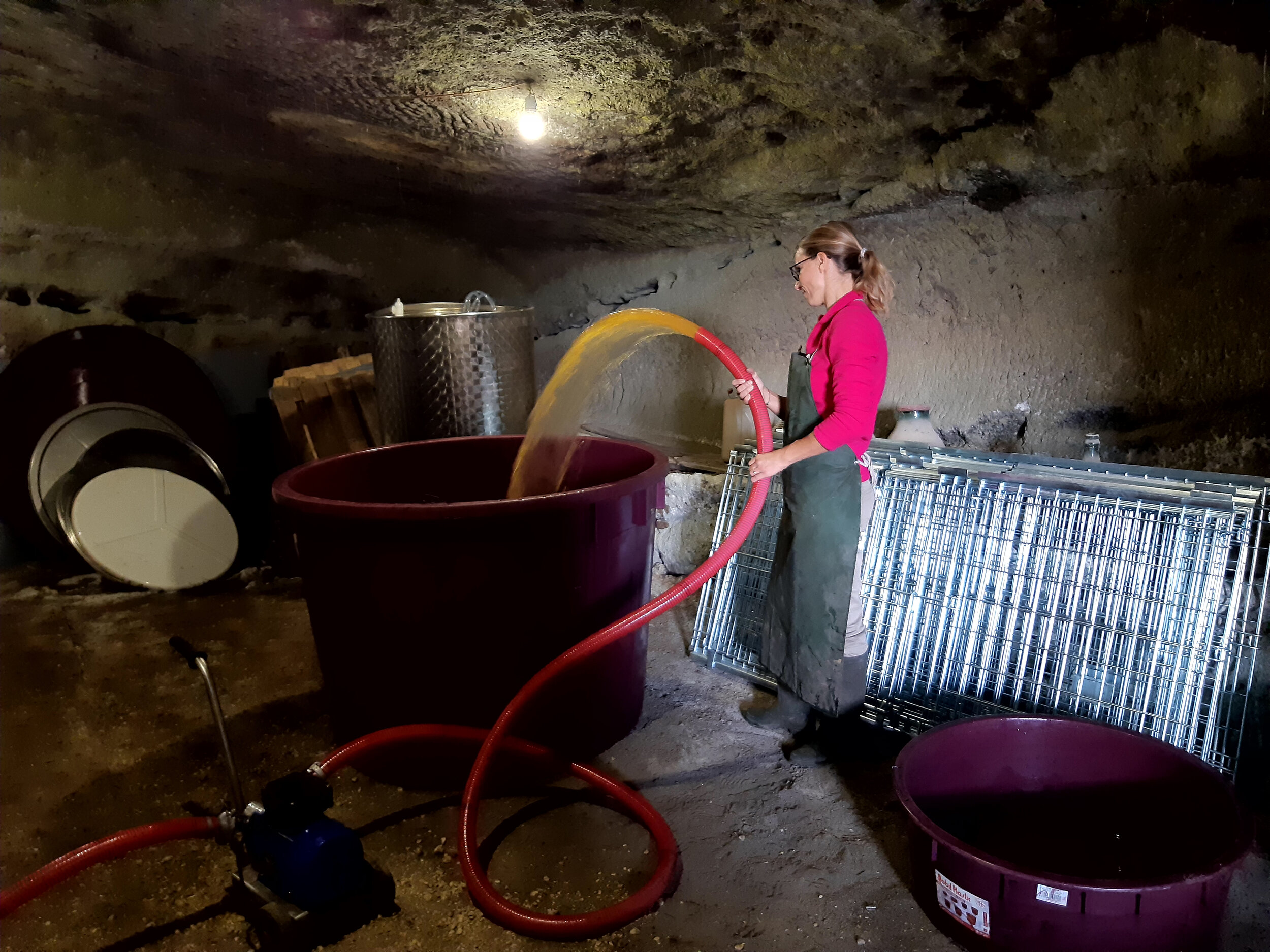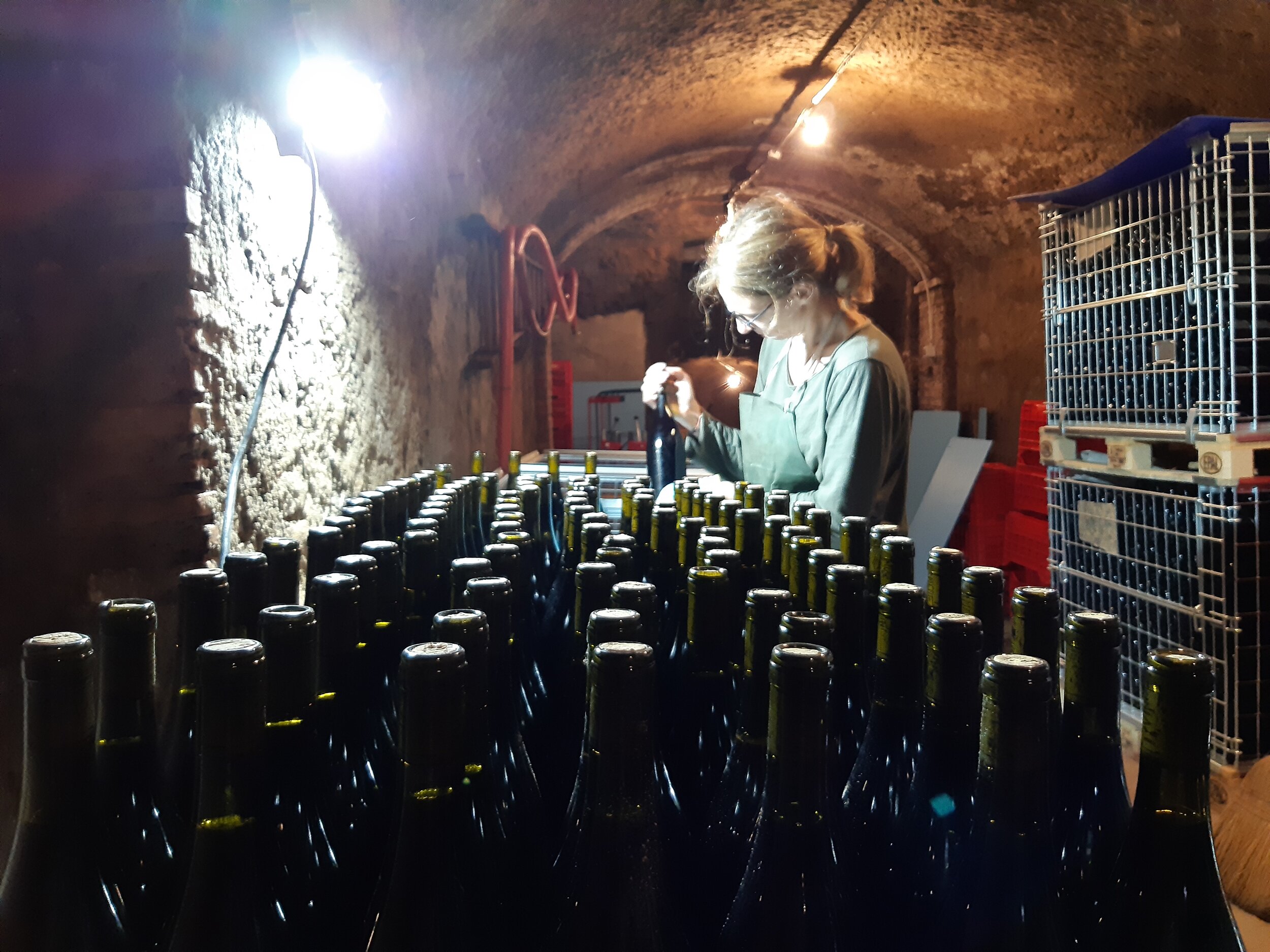Cantina Fermento
Umbria, Italy
Altitude | 300-500 metres
Soil | Clay, volcanic origin
Approach | Natural, unfiltered, wild yeast, no added sulphites
Husband and wife team Evita and Stefano Eboli are proof that it’s never too late to become a winemaker. Both full-time insurance professionals until a few years ago, the couple uprooted from Rome and moved to the ancient winegrowing region of Orvieto in 2018 after convincing one of Italy’s leading natural winemakers Danilo Marcucci to show them his ways. “For some time, even before our interest in natural wine, we had the plan to move to the countryside to be in close contact with nature and leave the alienating life of the big city,” says Stefano. Orvieto wasn’t originally on their radar but Danilo – an expert in Umbria’s varied sub-regions – invited them to explore the medieval city, its ancient cellars and surrounding countryside, which is dominated by small to medium non-natural winegrowers who mostly sell their fruit on to two industrial producers. It wasn’t always this way – Orvieto has a long and rich history dating back to the 10th century BC Etruscan era of producing some of Italy’s most sought-after wines. “Today Orvieto is the victim of a process that began in the late 1970s which sees a strong emphasis on industrial wine and agriculture that makes extensive use of chemical solutions and is highly mechanized,” says Evita. “Here in Orvieto there are many wineries, some of which are historic and ancient but unfortunately none that make natural wine: we are the first.”
At just half a hectare, Cantina Fermento is one of the smallest vineyards we have ever visited. Situated in Castel Viscardo, Fermento’s 60-year-old vines hug a hill spanning altitudes of 300 to 500 meters, surrounded by fruit and olive trees, and thick woodland. On clay soils the indigenous grape varieties bring out a kaleidoscope of flavours: Procanico (which gives structure and body); Verdello (acidity and citrus notes); Drupeggio (fruity flavors such as apple and peach); Grechetto (notes of ripe fruit and dried fruit); Malvasia (floral and aromatic); Montepulciano (strength, structure, tannin, colour); and Sangiovese (body, acidity, structure). Fermento’s wine cellar is an original Etruscan cave on a cobbled lane, and its here – guided by Danilo – that Evita and Stefano make just three wines, with nothing added and nothing taken away: one sparkling, one orange and one red. Like so many new natural wine producers, Evita and Stefano still have to work part-time in their office jobs to fund their winemaking, but their dream is one day to focus all their time on Fermento.

